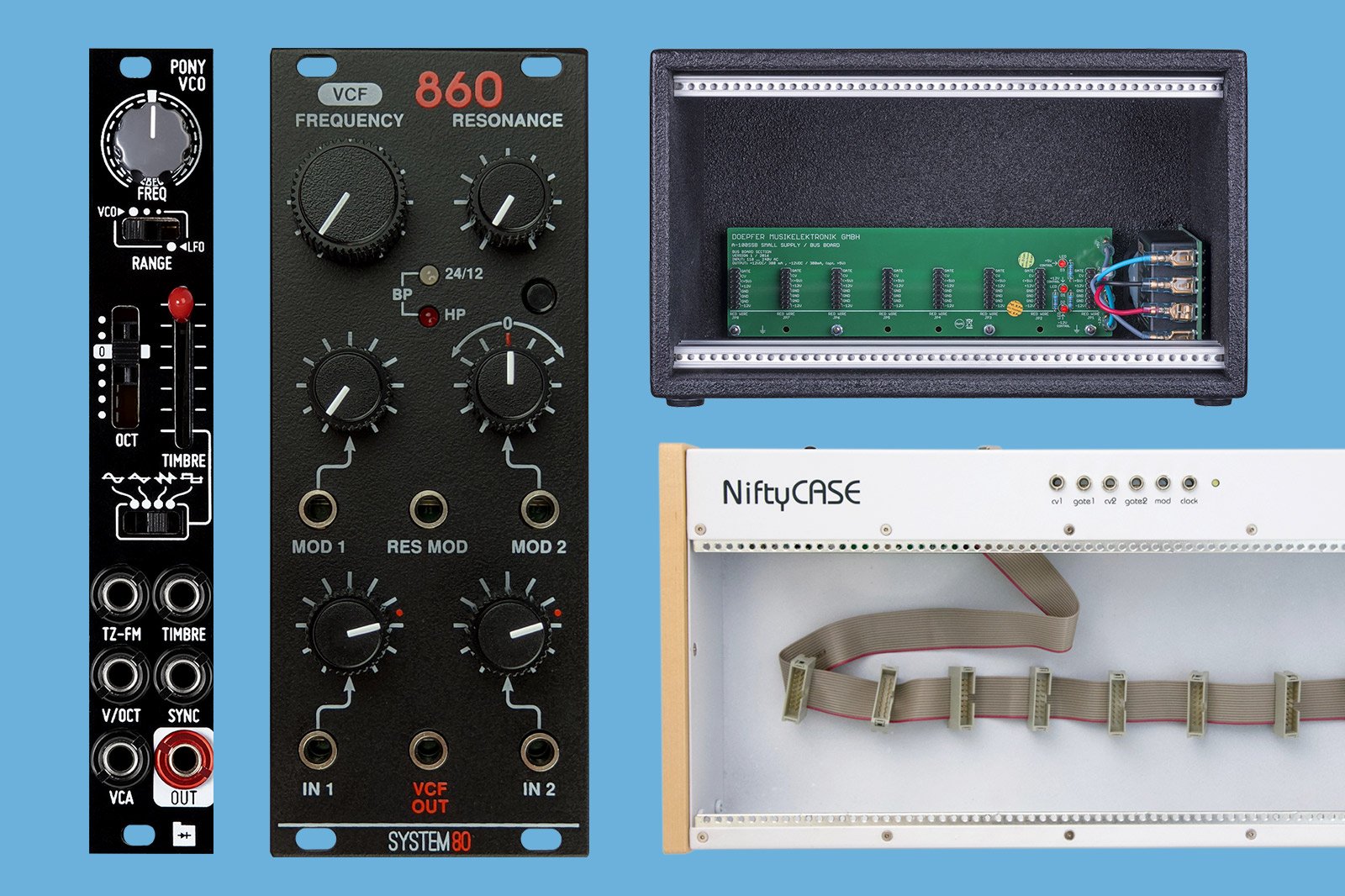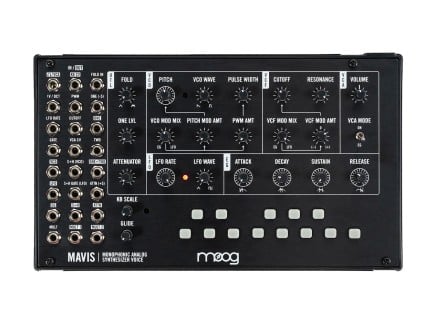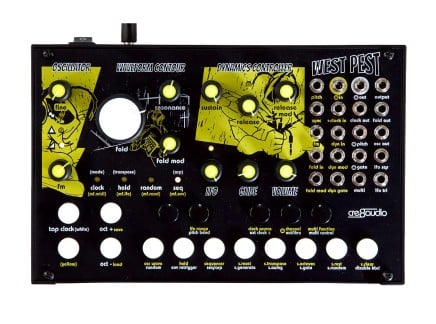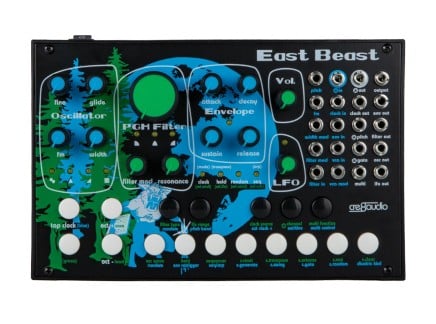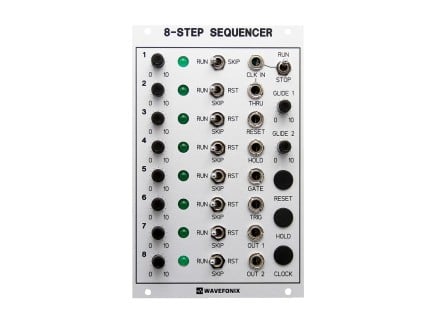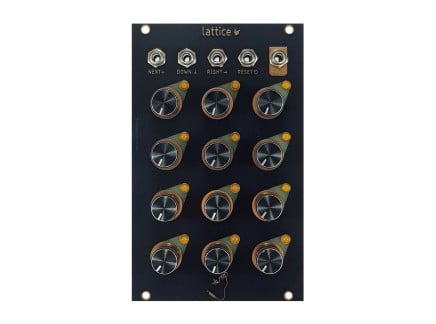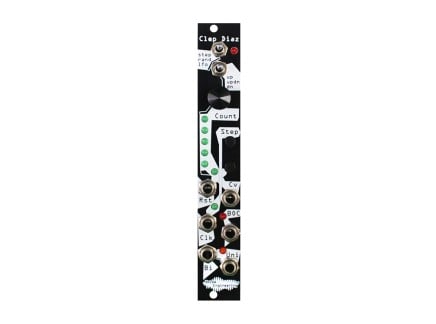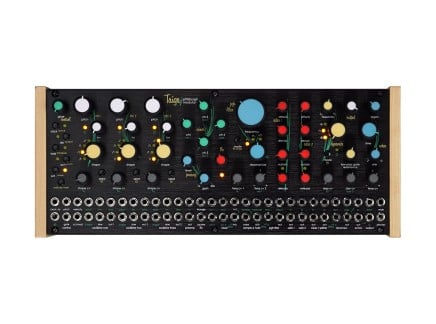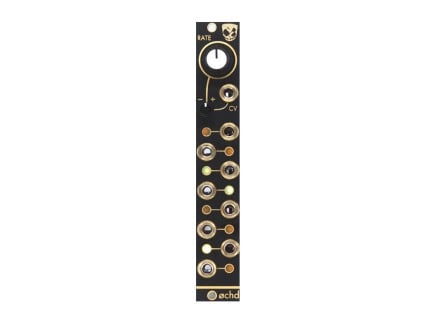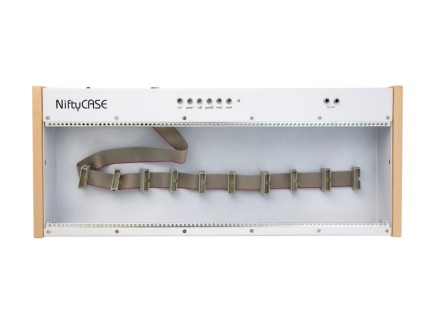Well, that’s easy—of course you should. It’s the most extraordinary intersection between the creative, technological, and expressively nerdy aspects of your character. It elicits the same feelings of joy a four-year-old gets upon entering an adventure playground or climbing up for your first pony ride. Your Instagram account is going to love you, and you’re going to spend a lot of time feeling musically superior like you are living your best and most intentional life. We can assure you that the sudden drain in your resources, the pain of neglected personal relationships and the imbalance between the bleep you get out and the effort you put in are merely side effects to be ignored. You should definitely get into modular!
Putting the grand aspirations aside, should you really buy a modular synthesizer? And what does that mean anyway? You must break down the question and think about what you’re asking. To be interested in this question in the first place suggests that there’s something about it that’s become fascinating to you. It may be the look, the blinking lights, the fields of knobs and the tangle of patch cables that seems so invitingly visceral. It might be even the sound. It has a very different vibe to regular synthesizers; it has mixtures of textures, competing melodies and barely-contained noise. Or, you may simply see it as a music-making and expressive tool you’ve yet to explore.
There’s no right answer to this question—and no easily buyable solution is waiting to take you forward. So, let me give you some advice from my journey into modular, in the hope that it will smooth the way or give you an off-ramp to get the heck out of here.
It’s a Journey, Not a Destination
First, you must understand that you don’t “buy a modular”. Ok, that’s not literally true; you can buy the Shared System from Make Noise or the Black Modular System from Erica Synths, but to leap into modular with a curated system is to rob yourself of the modular adventure. Modular, and predominantly we’re talking about Eurorack, has a vast array of possible pathways. It’s like traversing the multi-verse, where each decision spawns another universe of possibilities. So, when you go modular, you are setting out to explore synthesis, signal manipulation, and modulation rather than solve a sonic conundrum.
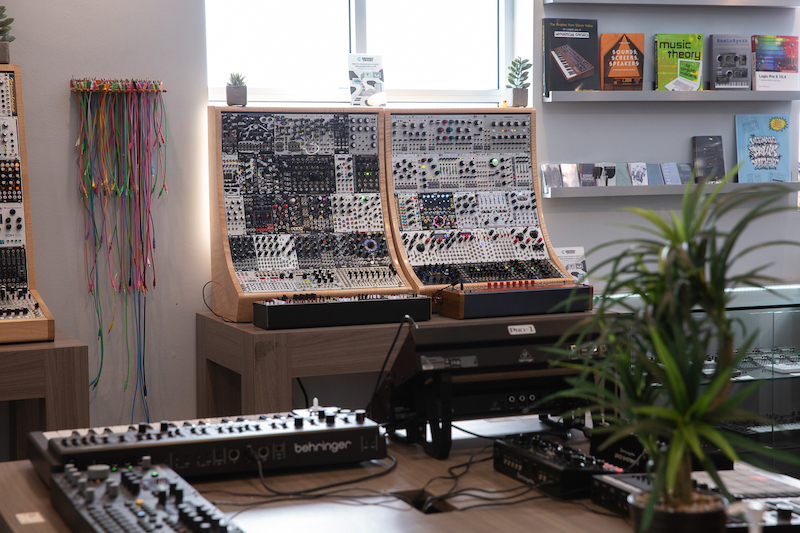
What I’m trying to get across is that modular can be a never ending process. And while you can build a synthesizer voice, a drum rack, an effects box, or a modulation station, the modular’s ability to morph and change into other applications is both its best feature and its curse. Modular will change you. It will change the way you look at signal routing and sound, and it will change your approach to gear.
And it’s not cheap. In fact, the pricing is very insidious. Individually buying a module never feels like a big deal. It’s not like buying a regular synthesizer that you have to consider and weigh the cost before making a decision. Besides, you already have synthesizers, and what will this new one bring to your range of tones? With modular, a new module might be couple of hundred bucks which feels much better value than dropping several hundred on a “proper” synth. Besides, you need this module to solve a specific problem or gap in your rack, not because you fancy some extra sounds; this module is vital to continuing your modular journey. So it doesn’t feel expensive while it’s happening; it’s only expensive when you pull back and realise what all these modules add up to. That off-ramp is looking pretty good right now, eh?
Every Journey Begins with a First Semi-step
If you think this journey might be for you, or if you’re ignoring my warnings then how do you take your first step? There are two schools of thought on this. On the one hand, you should jump right in and splurge on a bunch of modules, a case and some cables. On the other, a semi-modular synth might be a great way to test the water without a full modular commitment.
The great thing about semi-modulars is that they will work out of the box, and so you’re not left scratching your head trying to get sound out. In some senses, semi-modulars are also bad for exactly the same reason. It could be argued that you need that initial modular frustration to push you into learning how it works. With a semi-modular, you’ll probably be more than happy with the sound as it is and use it as a regular synth and so learn almost nothing about patching. However, if you approach a semi-modular intentionally, using patching examples and a bit of experimentation, you can start to glimpse how rewiring a synth can be a lot of fun.
The Moog Sound Studio bundles are a perfect semi-modular playground. Using the Mother-32, DFAM, and/or Subharmonicon, you can experience how their patch bays can infect one another, draw out different timbres, and start to interplay. Other good examples include the Pittsburgh Modular Taiga synthesizer, the Bastl Instruments SoftPop 2 and the Korg ARP 2600 M. Or, at the budget end, check out the East Beast or West Pest from Cre8audio, Moog's Mavis, or the Neutron from Behringer.
At the end of the day, a semi-modular will not give you a full modular experience, but it might open your eyes to the possibilities. And whether you decide to continue down this road or not, you still have a cool synth to play with.
[Editor's note: if you're interested to learn more about some of our favorite semi-modular synthesizers, be sure to check out our Semi-Modular Synthesizer Buying Guide!]
Full-On Modular Mayhem
Alternatively, you can jump straight down the rabbit hole, and for that we salute you. This is going to be great! You will love it down here; it’s your best decision ever.

So, how do you begin? Well, there’s no right or wrong way of doing this...which you’ll either find very reassuring or completely paralyzing. Given the vast choice of modules and pathways available, how do you choose those first ones? The most common response to this question is to be told to ask yourself, “what do I want to do?” If you already know then brilliant—focus on finding the modules that fit that. However, at first, I think most modular-curious people don’t necessarily know exactly what they want to do, and all they’re really after is permission to get stuck in and maybe a couple of pointers in the right direction.
You have permission from me, but as with any premium rate call, you might want to get permission from the person who pays the bills first. And so here are my pointers.
Getting something useful out of a modular synth usually requires up to half a dozen modules. You’ll also need a powered case or enclosure to put them in. Realistically, you should earmark $1,000–$2,000 for this first row of Eurorack. There are some great budget options (and by all means, check out this article about building a modular synthesizer on a budget), but we’re talking ballpark here.
If you don’t have a clear idea about what you’re trying to achieve, then I would recommend building a synthesizer voice with sequencing, modulation, and effects. It will contain very familiar elements, along with a mind-opening approach to things you think you already know.
Bear in mind that there are lots of options for each of these categories; but here are some of my personal suggestions:
The Case
Don’t overthink it. Forget the curvaceous walls of modular you see on Instagram; think about one row of 84 or 104 HP. Consider something simple like the Doepfer A-100 LC3 or the Cre8Audio NiftyCase. You don’t have to go for a “forever case” because the nature of a modular system is change, and you may or may not outgrow it or need something different down the line.
Analog VCO
- Intellijel Dixie 2+: Classic analog oscillator with individual waveform outputs, Sync, PWM and FM
- Nano ONA: Nice sounding oscillator with some wave shaping, Sync, PWM and FM
- Befaco Pony: Compact oscillator with wavefolding and thru-zero modulation on a single output
Filter
- Doepfer A-124SE VCF5 Wasp Filter: Get it, it's brilliant
- System 80 860 MKII: gorgeous Roland-style filter
VCA
- ALM Tangle Quartet Quad VCA - Multi-channel VCAs are always the best choice. It gives you more control and mixing.
- Erica Synths Black Quad VCA2: same reasons.
- Intellijel Quad VCA: same reasons.
Envelope
- Expert Sleepers Amelia: Impressive and slightly different approach to creating envelope shapes.
- Instruo Céis ADSR: standard voltage-controllable ADSR on sliders.
LFO
- DivKid øchd: Eight intertwined LFOs
- VoicAs 2^LFO: Dual analog LFO
- XAOC Devices Batumi: Quad LFO with multiple shapes and sync
Effects
- Dreadbox Nostalgia: an affordable three-stage delay
- Tiptop Audio ZVERB: Multiple reverb types, all with voltage control
- ALM MFX: an assortment of creative stereo effects
- Erica Synths Pico DSP: mono-to-stereo multieffects
That’s a single synthesizer voice remade in modular. It’s a lot to think about, and there are a lot of decisions to make that will occupy you for quite some time. Do you have the headspace for that? Are you getting a sense of what going modular may mean?
Sequencing
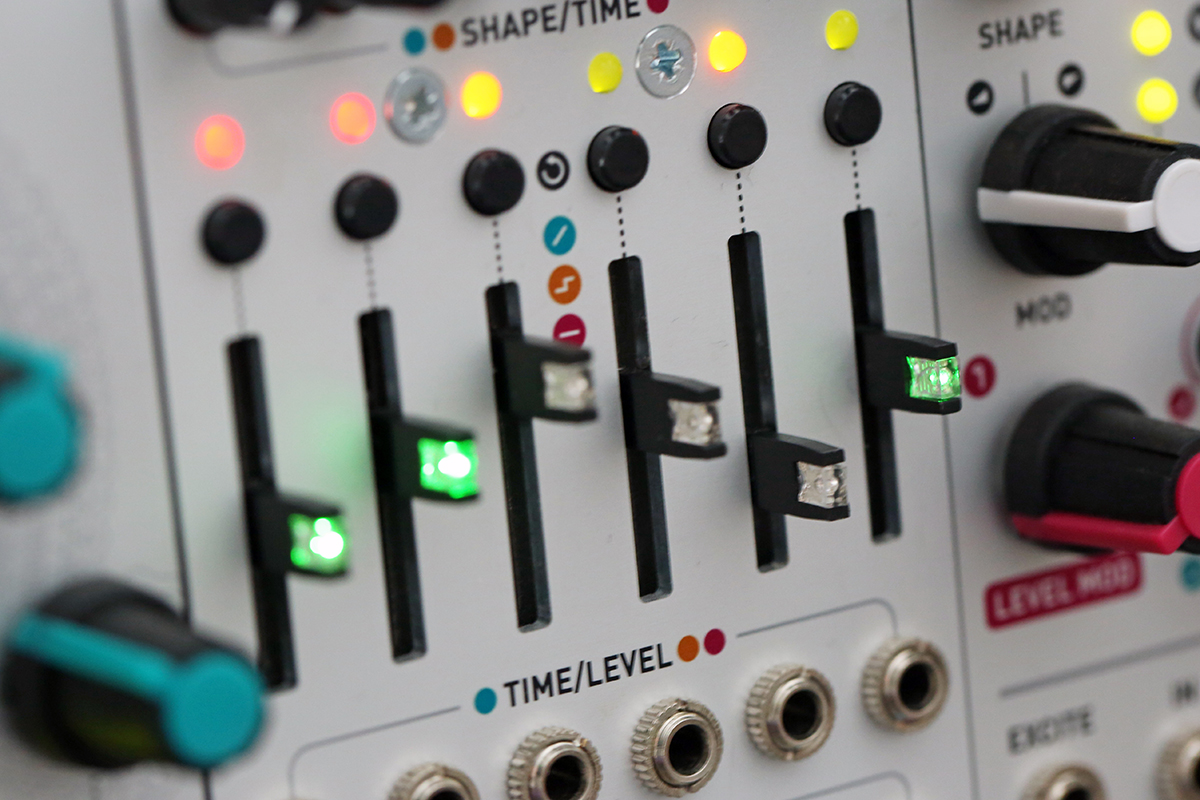
You may already have a sequencer with the CV pitch and Gate connections you’ll need to run a Eurorack synth voice. The Arturia Keystep, Keystep Pro, and Keystep 37 variations all have this ability, as do some other MIDI controllers. But I would recommend pivoting away from the keyboard paradigm. Modular gives you the opportunity to think differently, and you should embrace that.
Here are some recommendations for affordable Eurorack sequencers:
- Noise Engineering Clep Diaz: fun and playable generator of notes
- Wavefonix 8-Step Sequencer: 8 steps of performance-orientated sequencing
- Tenderfoot Lattice: interesting grid of 12 notes in different directions
Patch Happy
With your new modular row of gleaming Eurorack and a fist full of cables, patch the sawtooth output of the oscillator into the filter and then into an open VCA. Spend some time playing with the pitch and cutoff knobs. You might then want to pump a sequence into the oscillator’s 1V/octave input and use a gate to trigger the envelope. You might patch the envelope to the VCA, or you might patch it to the filter cutoff. You could then patch an LFO to any available parameter. Think about using the LFO as a clock and patch it into itself to run the sequencer at an ever changing speed. Any input and output are fair game for exploration and exploitation. Sometimes it will sound rubbish, with all the charm and character of a broken signal generator—but at other times, you will marvel at a single animated tone. This is not how normal synthesizers work.
You’re probably already thinking that you need two envelopes and maybe more VCAs; some randomization would be nice, and is a single oscillator enough? Stop and breathe. Yes, you are starting to feel the tug of the modular problem. On one hand, it's great—you're learning a lot about your musical values as you slowly discover what your system needs. However, those feelings may result in a cascade of module purchases that rapidly expand your system; so be careful.
So...Should You?
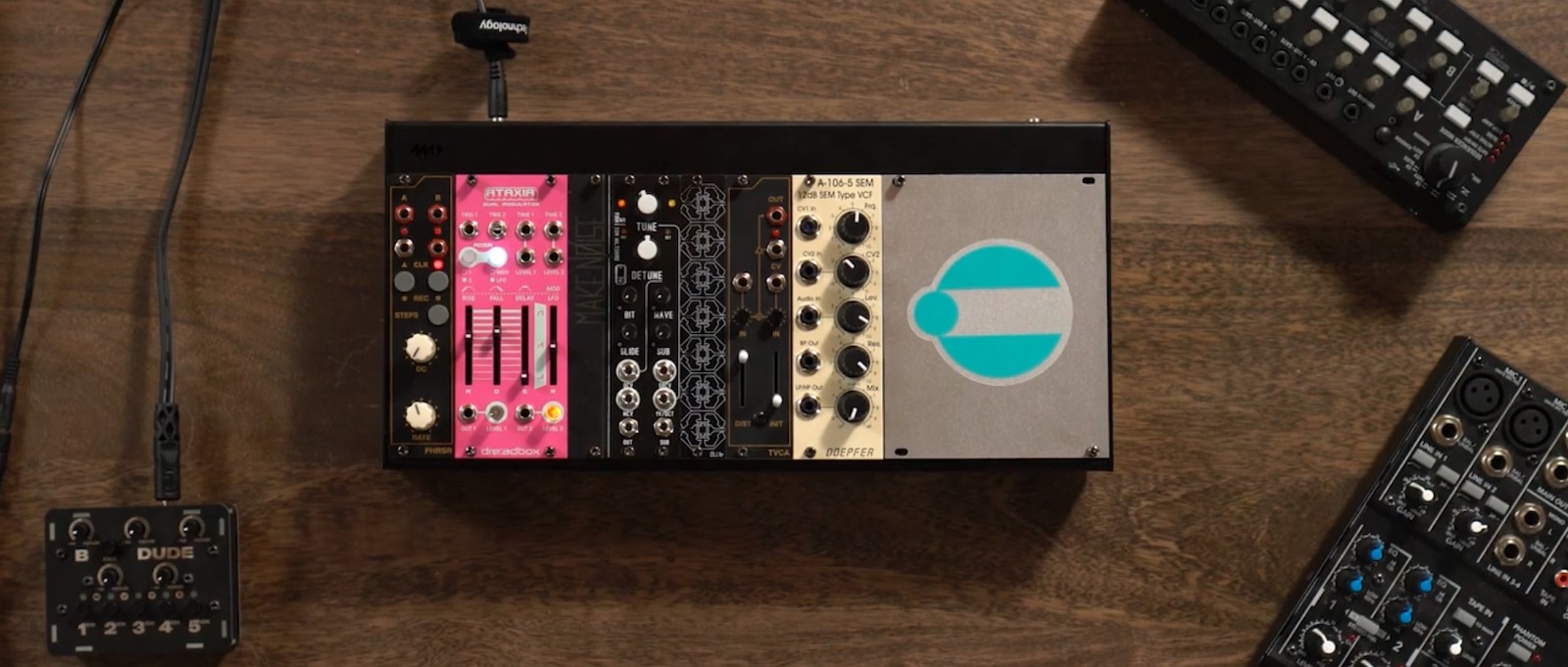
I’ve given you some practical examples of how to step into modular, and you have to weigh that information against the amount of time, money, and enthusiasm you have for stepping into a new way of working. Don’t buy into it assuming it will just give you some different textures; buy into it only if you want to experiment with how you generate music and discover sounds.
Staying with self-contained hardware synthesizers can be a more sensible way to approach sound design. There are entire universes of sound to explore within these tailor-made electronic instruments, and all you need to think about is the user interface and how it enables you to craft sound. Going modular, on the other hand, can push you right out of your comfort zone, increase your option anxiety, and undermine your confidence in your ability to make the right decisions. You’re no longer just crafting sound; you are also crafting the instrument, building the synthesizer and incorporating opposing concepts of how that should work. If that doesn’t thrill you, you should probably stick to what you know.
On the other hand, that very well may be exactly what you're looking for.

